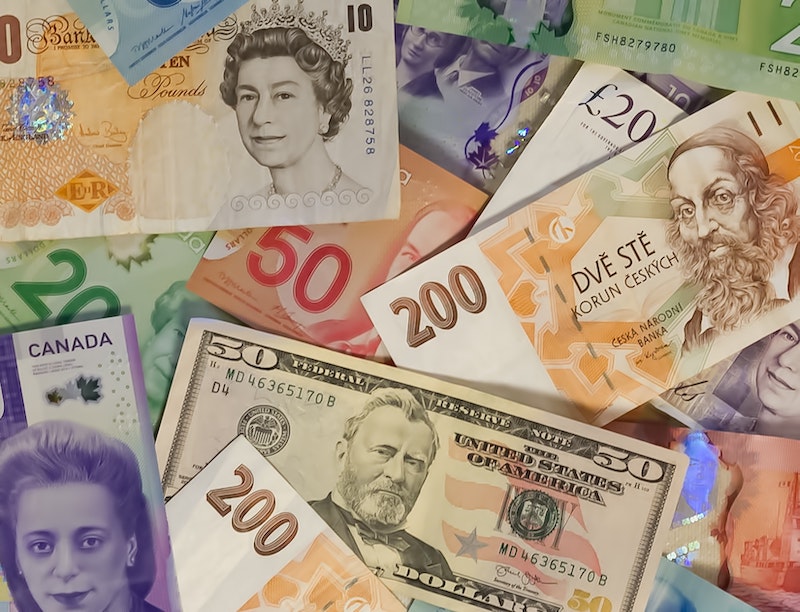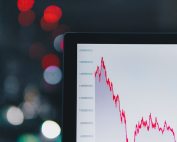Goldman Sachs Intrinsic Stock Value – Goldman Sachs Remains Bullish on Commodities Despite Cyclical Risks Fading – Selectivity Key, Says Investment Firm
March 30, 2024

☀️Trending News
It is known for its expertise in advising clients on various financial matters, including mergers and acquisitions, asset management, and trading. The company is also a major player in the commodities market, providing valuable insights and strategies to investors. Recently, Goldman Sachs ($NYSE:GS) released a statement regarding the current state of the commodities market, stating that the cyclical risks surrounding it are gradually fading. As economic activity picks up, demand for commodities such as oil, metals, and agricultural products is expected to increase.
However, despite this positive outlook, Goldman Sachs cautions investors to remain selective in their approach to commodities. The investment firm stresses the importance of carefully choosing which commodities to invest in, as not all will experience the same level of growth and profitability. Selectivity is key in navigating this complex market and mitigating potential risks. According to Goldman Sachs, there are several factors that investors should consider when selecting commodities for investment. These include supply and demand dynamics, geopolitical factors, and environmental regulations. Understanding these factors and their potential impact on specific commodities can help investors make informed decisions and mitigate potential risks. In addition to selectivity, Goldman Sachs also emphasizes the importance of diversification in commodity investments. By diversifying their portfolio, investors can spread their risk and minimize potential losses if one commodity underperforms. This approach also allows for exposure to various sectors within the commodities market, helping to capture opportunities for growth. Despite the fading cyclical risks, Goldman Sachs remains bullish on commodities, believing that they will continue to play a crucial role in a well-diversified investment portfolio. The investment firm’s expertise and insights in this market can provide valuable guidance to investors looking to capitalize on the potential opportunities while managing potential risks. As always, prudent decision-making and careful selection are key in navigating the ever-changing commodities market.
Price History
This news comes as the firm’s stock opened at $406.9 on Monday and closed at $404.9, showing a slight decrease of 0.5% from the previous closing price of 406.8. Despite this minor dip in their stock price, Goldman Sachs remains optimistic about the future of commodities. The investment firm believes that while cyclical risks may be fading, it is still crucial for investors to be selective in their commodity investments. This means carefully choosing which commodities to invest in rather than taking a blanket approach. According to Goldman Sachs, the key to success in the commodities market lies in being selective and strategic. This is because different commodities have varying levels of risk and potential for growth. By being selective, investors can mitigate risks and capitalize on opportunities in specific commodities. One of the main reasons why Goldman Sachs maintains their bullish outlook on commodities is the current global economic situation. With major economies recovering from the impact of the pandemic, there is a growing demand for commodities such as oil, metals, and agricultural products. This increased demand, coupled with supply constraints and government stimulus measures, is expected to drive up commodity prices in the coming months.
Additionally, Goldman Sachs also highlights the potential for inflation to further boost commodity prices. As central banks continue to keep interest rates low and inject more money into the economy, there are concerns about rising inflation. In such a scenario, commodities serve as a hedge against inflation, making them an attractive investment option. These include geopolitical tensions, potential supply disruptions, and unforeseen changes in government policies. As such, the firm emphasizes the importance of being selective and closely monitoring market developments. As always, investors should carefully assess their risk tolerance and conduct thorough research before making any investment decisions. Live Quote…
About the Company
Income Snapshot
Below shows the total revenue, net income and net margin for Goldman Sachs. More…
| Total Revenues | Net Income | Net Margin |
| 46.25k | 7.91k | 23.8% |
Cash Flow Snapshot
Below shows the cash from operations, investing and financing for Goldman Sachs. More…
| Operations | Investing | Financing |
| -17.39k | -75.96k | 59.6k |
Balance Sheet Snapshot
Below shows the total assets, liabilities and book value per share for Goldman Sachs. More…
| Total Assets | Total Liabilities | Book Value Per Share |
| 1.64M | 1.52M | 359.62 |
Key Ratios Snapshot
Some of the financial key ratios for Goldman Sachs are shown below. More…
| 3Y Rev Growth | 3Y Operating Profit Growth | Operating Margin |
| 1.3% | – | – |
| FCF Margin | ROE | ROA |
| -43.1% | 5.7% | 0.4% |
Analysis – Goldman Sachs Intrinsic Stock Value
As an analyst, I have conducted a thorough analysis of GOLDMAN SACHS‘s financials and have come to some key conclusions. Overall, GOLDMAN SACHS is a strong company with solid financials and a promising future. One important aspect to note is the fair value of GOLDMAN SACHS’s share. Through our proprietary Valuation Line, we have calculated the fair value to be around $446.6. This takes into consideration various factors such as the company’s financial performance, industry trends, and market conditions. This fair value serves as a benchmark for investors to determine whether the current stock price is overvalued or undervalued. Currently, GOLDMAN SACHS’s stock is trading at $404.9, which means it is undervalued by 9.3% based on our fair value calculation. This presents a potential buying opportunity for investors who believe in the company’s long-term potential. Of course, market fluctuations and other external factors could also affect the stock price in the short term, but our analysis suggests that the stock has room to grow in the future. In terms of financials, GOLDMAN SACHS has shown strong performance in recent years. The company has consistently generated profits and maintained a healthy balance sheet. Its revenue and earnings have also been steadily increasing, indicating a positive trajectory for the company. Moreover, GOLDMAN SACHS has a strong reputation in the financial industry and is well-positioned to capitalize on emerging opportunities. Its diverse portfolio of services and global presence also contribute to its stability and potential for growth. In conclusion, our analysis indicates that GOLDMAN SACHS is a strong company with a fair value above its current stock price. This presents an opportunity for investors to consider adding the company’s stock to their portfolio. However, as with any investment, it is important to conduct personal research and analysis before making any decisions. More…

Peers
JPMorgan Chase & Co, Morgan Stanley, Citigroup Inc are some of its major competitors.
– JPMorgan Chase & Co ($NYSE:JPM)
JPMorgan Chase & Co is an American multinational investment bank and financial services holding company headquartered in New York City. The company was formed in 2000 when Chase Manhattan Corporation merged with JP Morgan & Company. The company operates in four segments: Consumer & Community Banking, Corporate & Investment Banking, Commercial Banking, and Asset & Wealth Management. JPMorgan Chase is the largest bank in the United States by assets and the sixth-largest bank in the world by assets.
– Morgan Stanley ($NYSE:MS)
Morgan Stanley is an American multinational investment bank and financial services company headquartered in New York City. The company operates in 42 countries and has more than 55,000 employees. The company’s market capitalization is $139.2 billion as of May 2022, and its return on equity is 9.95%. Morgan Stanley is a global leader in providing financial and investment services to a wide range of clients, including corporations, governments, institutions, and individuals. The company’s businesses include investment banking, institutional securities, wealth management, and investment management.
– Citigroup Inc ($NYSE:C)
Citigroup Inc is a global financial services company with a market cap of 88.82 billion as of 2022. The company provides consumer banking and credit, corporate and investment banking, securities brokerage, transaction services, and wealth management services. Citigroup operates in more than 100 countries and has over 200 million customer accounts.
Summary
Goldman Sachs maintains a positive outlook on the commodity markets, with cyclical risks fading for commodities.
However, the investment firm advises investors to remain selective in their approach despite the improving market conditions. This indicates that Goldman Sachs believes in careful and strategic decision-making when it comes to investing in commodities. The firm’s analysis could potentially guide investors in making informed decisions about their investments in the commodity sector. This viewpoint also suggests that Goldman Sachs has a positive view on the overall performance of the commodity markets, but it is important to carefully evaluate individual opportunities.
Recent Posts














